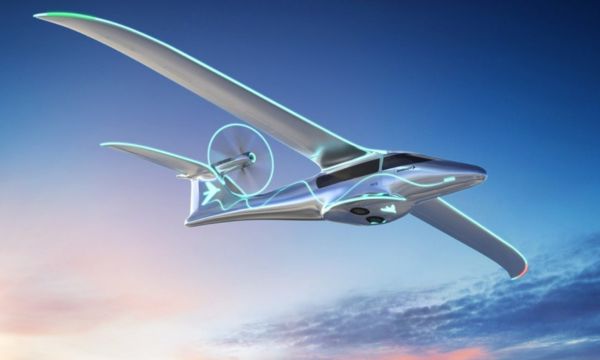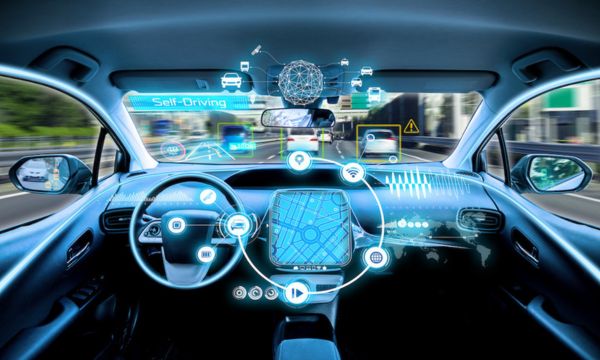Optimizing Performance: AI in Aerodynamics
In the ever-changing world of aerospace engineering, the search for optimal efficiency is always ongoing. Aerodynamics is the study of how air behaves when it reacts with moving objects.
It is a key factor in determining the efficiency and effectiveness of an aircraft. As technology continues to develop, artificial intelligence (AI) has become an incredibly useful tool in aerodynamics, giving engineers new ways to make things better.
This article discusses how artificial intelligence is used in aerodynamics and how it can help improve performance in many areas, including aircraft design, simulation, and operational efficiency.
1. Application of AI in Aerodynamic Design:
Generated Design
Using machine learning algorithms to study large design spaces and propose new efficient solutions is one of the main ways artificial intelligence is used in aerodynamics.
Traditional aerodynamic design requires changes to be made manually, simulations run, and assessed.
Artificial intelligence makes this easier by automatically suggesting possible designs that take many factors into account at the same time.
Generative design tools can look at vast amounts of aerodynamic contours and fluid dynamics simulations and find patterns and connections that human designers might miss.
This not only speeds up the design process but also leads to new and better ideas. Engineers can provide AI algorithms with specific performance criteria, and the algorithm will then come up with ideas that meet or exceed those criteria.
Design Optimization Based on Neural Network
Neural networks are a form of artificial intelligence that has shown amazing skills in improving design efficiency. These networks learn from many existing aerodynamic models, looking for patterns and relationships between design factors and how well the models work.
Once trained, neural networks can support designs by making changes that can improve aerodynamic performance.
Through feedback loops, neural networks continually improve their predictions, better-providing design recommendations that maximize performance metrics such as lift-to-drag ratio.
This iterative optimization process significantly reduces the time and resources required for manual design refinement.
2. Simulation and Analysis:
Faster and More Accurate CFD Simulations
Computational Fluid Dynamics (CFD) models are important for figuring out how air moves around an aircraft and for guessing how it will behave in the air. Artificial intelligence changes this process by making simulations faster and more accurate.
Machine learning algorithms can improve CFD models by predicting turbulence and flow patterns better than other methods.
AI-powered CFD models not only reduce the time required for aerodynamic analysis but also allow engineers to experiment with more design options.
AI-enhanced models provide designers with real-time feedback to help them make informed decisions, resulting in more refined and optimized aerodynamic profiles.
Dealing with Difficult Aerodynamic Events
Aerodynamics often involves dealing with complex issues such as shock waves, boundary layer separation, and unstable flows. Artificial intelligence is very good at dealing with these types of problems because it can learn from many different situations.
For example, neural networks can be learned on datasets containing simulations of extreme conditions. This allowed them to generalize and guess how aerodynamics would react in situations they had never seen before.
This feature is useful in situations such as high-speed flight where standard methods may not capture the complex interactions between air and aircraft surfaces.
AI-powered models help us understand more about how aerodynamics behave in different situations, allowing us to design more sustainable and flexible aircraft.
3. Operational Efficiency:
AI-Powered Flight Control Systems
Adding artificial intelligence to flight control systems allows aircraft to operate more efficiently. Adaptive control algorithms implemented through machine learning can change the control surface in real-time to make it more efficient.
This dynamic adjustment makes the aircraft more stable, consumes less fuel, and is easier to maneuver, especially in bad weather.
An important part of AI also lies in detecting and reducing aerodynamic instabilities. By continuously collecting and analyzing flight data, machine learning algorithms can spot potential problems before they get worse.
This allows them to make changes that make flying safer and more efficient.
Maintenance Schedule for Aerodynamic Components
During operation, mechanical components of aircraft, such as wings and control surfaces, are subjected to significant stresses. AI-powered predictive maintenance models look at data from sensors and tracking systems to guess how long those parts will work.
By identifying potential problems before they occur, airlines can plan maintenance more efficiently, minimize downtime, and reduce operating costs.

Optimizing-Performance-AI-in-Aerodynamics (Source – Google)
Conclusion
The aerospace industry is undergoing a major transformation due to the application of artificial intelligence in aerodynamics. Artificial intelligence has become an important part of achieving optimal aerodynamic performance.
It changes the way things are designed through generative design and neural network optimization, improving the accuracy of simulations and enabling real-time change operations.
As technology continues to develop, the way artificial intelligence and physics work together can open new frontiers and push the boundaries of aircraft design and flight.
The quest for impeccable performance continues and artificial intelligence is a powerful ally bringing the aircraft industry into a new era of unprecedented efficiency and innovation.
FAQs
1. What does aerodynamics mean?
Aerodynamics is the study of how air moves and interacts with moving objects such as airplanes. It looks at how air moves, how pressure is distributed, and other factors that influence how well an aircraft functions.
2. What role does AI play in aerodynamics?
Artificial intelligence helps improve aerodynamics by using generative design and neural network-based optimization to better improve the design process.
It also enables better computational fluid dynamics (CFD) modeling, accelerates analysis, and improves operational efficiency through predictive maintenance and adaptive flight control systems.
3. What is generative design in physics?
Generative design is a method of automatically coming up with new designs by using machine learning techniques to navigate large design spaces.
In the field of aerodynamics, it can take many factors into account at once to help create the best plan for the aircraft.
4. In what ways does AI make aerodynamic CFD models better?
Artificial intelligence makes CFD models better by predicting flow patterns and turbulence better than the old way of working.
It speeds up simulations and provides real-time feedback to makers so they can make informed decisions and try out more design changes.
5. What role do neural networks play in improving the aerodynamics of designs?
Neural networks study many aerodynamic models and find patterns and relationships between design factors and performance outcomes.
When they guide the design process by making changes that improve aerodynamic performance, they reduce the time and resources required for manual fine-tuning.
6. What role does artificial intelligence play in aircraft flight control systems?
Artificial intelligence makes flight control systems better by providing them with customizable control algorithms that can change the best way to use control surfaces based on how the air is moving at any given time.
This dynamic adjustment makes the aircraft more stable, consumes less fuel, and is easier to maneuver, especially in bad weather.
 Enhancing Safety: AI-Driven Collision Avoidance
Enhancing Safety: AI-Driven Collision Avoidance
As technology continues to change, artificial intelligence (AI) is becoming increasingly important in many areas. One very […]
More Understanding AI in Autonomous Vehicles
Understanding AI in Autonomous Vehicles
Self-driving cars, also known as self-driving cars, are a major technological advancement that relies heavily on artificial […]
More Revolutionizing Driving: AI Integration in Cars
Revolutionizing Driving: AI Integration in Cars
The automotive industry is undergoing a major transformation as artificial intelligence (AI) is applied to cars. As […]
More